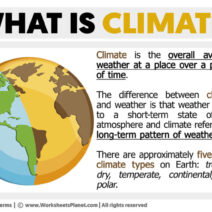Understanding which climate zone you inhabit is more than just a geographical curiosity; it holds profound implications for your lifestyle, health, and even your purchasing decisions. Whether you are an avid gardener, a hiker, or someone interested in energy efficiency in your home, knowing your climate can guide your choices. Climate zones reflect not only temperature variations but also factors such as humidity, precipitation patterns, and even the types of vegetation that can thrive in your area. This combination of elements fosters a microcosm that influences local ecosystems and, depending on where you live, can profoundly affect your day-to-day existence.
First, let us delve into the fundamental concepts behind climate classification. The Köppen climate classification system, developed in the early 20th century, categorizes the world’s climates into five primary types: tropical, arid, temperate, continental, and polar. Each of these broad categories further encompasses more specific subcategories. For instance, a tropical climate is differentiated into rainforest, monsoon, and savanna, each with unique characteristics. This classification underscores an essential point: climates are not uniform; they vary significantly based on geographical location, elevation, and proximity to bodies of water.
To identify your climate zone accurately, you might first consider your geographic coordinates. Are you located near the equator, or are you situated at a higher latitude? Areas close to the equator typically fall into tropical climates, characterized by high temperatures and abundant rainfall. Conversely, regions further from the equator may experience more variable conditions — from warm summers and cold winters in temperate zones to the frigid temperatures of the polar climate zone.
Furthermore, elevational changes can also create microclimates. Mountain ranges can trap moisture and create conditions that differ dramatically from the surrounding lowlands. This phenomenon explains why certain mountainous regions may support lush vegetation, while areas merely miles away are arid deserts. Familiarizing yourself with local topography, therefore, can provide critical clues about your climate zone.
The implications of understanding your climate zone extend beyond mere academic interest. For homeowners, this knowledge is pivotal when making decisions about insulation, heating, and cooling systems. A well-insulated home in a temperate zone will require different heating solutions than one located in a dry desert climate, where evaporative cooling may be more effective. By aligning your home’s design and systems with the specific demands of your local climate, you can achieve greater efficiency and comfort.
Additionally, if gardening is a passion or even a hobby, knowing your climate zone will directly influence the types of plants that can thrive in your yard or garden. Each climate zone has its own growing season and seasonal temperature ranges, which dictate what plants are likely to prosper. Some plants may be suited for the warm, humid air of a tropical climate while others flourish in the dry heat of arid regions. Thus, adapting your gardening choices to your specific climate not only improves your chances for success but also enhances the overall biodiversity of your local environment.
Climate zones also have broader repercussions. They can affect local economies, regional agriculture, and even the way communities plan for natural disasters. For example, areas in hurricane-prone climates must adopt different building codes than those in cold-climate zones to withstand severe weather conditions. Understanding your climate zone can empower you to participate actively in local sustainability initiatives and make informed choices regarding environmental conservation efforts, which have become increasingly crucial as climate change affects entire ecosystems.
Individuals may feel a profound sense of connection to their climate zone. Perhaps it’s the crisp air of autumn in temperate zones that evokes childhood nostalgia or the vibrant colors of blooming flora in tropical regions that inspire creativity. Each climate zone represents a distinct narrative regarding seasonal changes, wildlife, and human adaptation. Appreciation of this interrelationship can engender deeper respect for local environments and a desire to protect them.
As you contemplate which climate zone you inhabit, consider leveraging online resources and community forums. Many mapping services provide visual representations of climate zones, with detailed descriptions of each zone’s characteristics. These resources can help you determine not just your climate zone, but also the regional weather patterns that influence daily life.
Moreover, community engagement is crucial. Local environmental groups often focus on climate adaptation strategies that are specific to your region, guiding residents on how to prepare for weather fluctuations and seasonal changes. Engaging with these organizations can provide valuable insights into how climate dynamics may impact future conditions and help foster a cooperative approach to sustaining your environment.
In conclusion, knowing your climate zone is an invaluable resource that shapes your lifestyle, economic decisions, and personal well-being. Armed with this knowledge, you can navigate not just your surroundings, but also the broader impacts of climate on our collective future. By understanding the intricacies of your climate zone, you become an informed participant in the dialogue surrounding sustainability and environmental preservation, contributing to building a more resilient and aware community.


